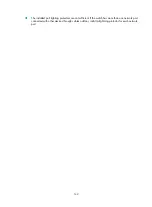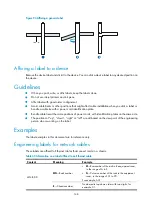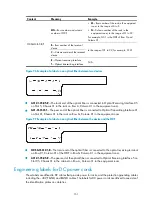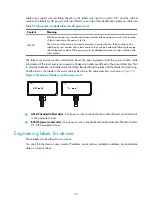
156
Figure 102
Binding the cables
•
When you route cables through sharp sheet metal penetration points or along sharp edges of
mechanical parts, use bushings or take any other action to protect the cables from being cut or
abraded. The sheet metal penetration points must be smooth and fully rounded.
•
After binding the cables, cut the excess from the ties, leaving no sharp or angular tips. See
.
Figure 103
Cutting the cable ties
•
Route, bind, and attach excess cables for easy, safe maintenance activities and proper operations.
•
Do not tie the power cords to the slide rails.
•
When you connect a cable to an articulated part, for example, when you connect a grounding
cable to a rack door, leave enough slack in cables and make sure they are not stressed from any
movement of the part.
•
Cables must be protected at points where they might rub or come in contact with sharp edges or
heated areas. Use high temperature cables near heat sources.
•
Fasten heavy or rigid power cords at the connectors to relief stress.
Cable management examples
The devices in the following figures are for illustration only.
Summary of Contents for S12500 Series
Page 40: ...30 Figure 28 Installing an upper expansion cable management bracket 1 2 3 4 5 6 7...
Page 109: ...99 Figure 74 Replacing a card for the S12504 A Card to be removed B Card to be installed...
Page 149: ...139 Figure 85 Loopback operation on an optical transceiver...
Page 164: ...154 Figure 100 Example of a device label...





































